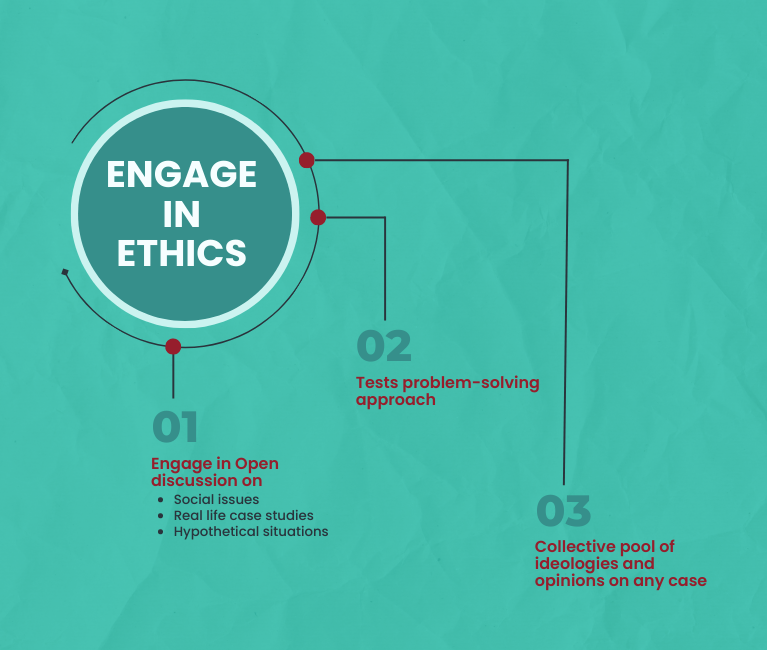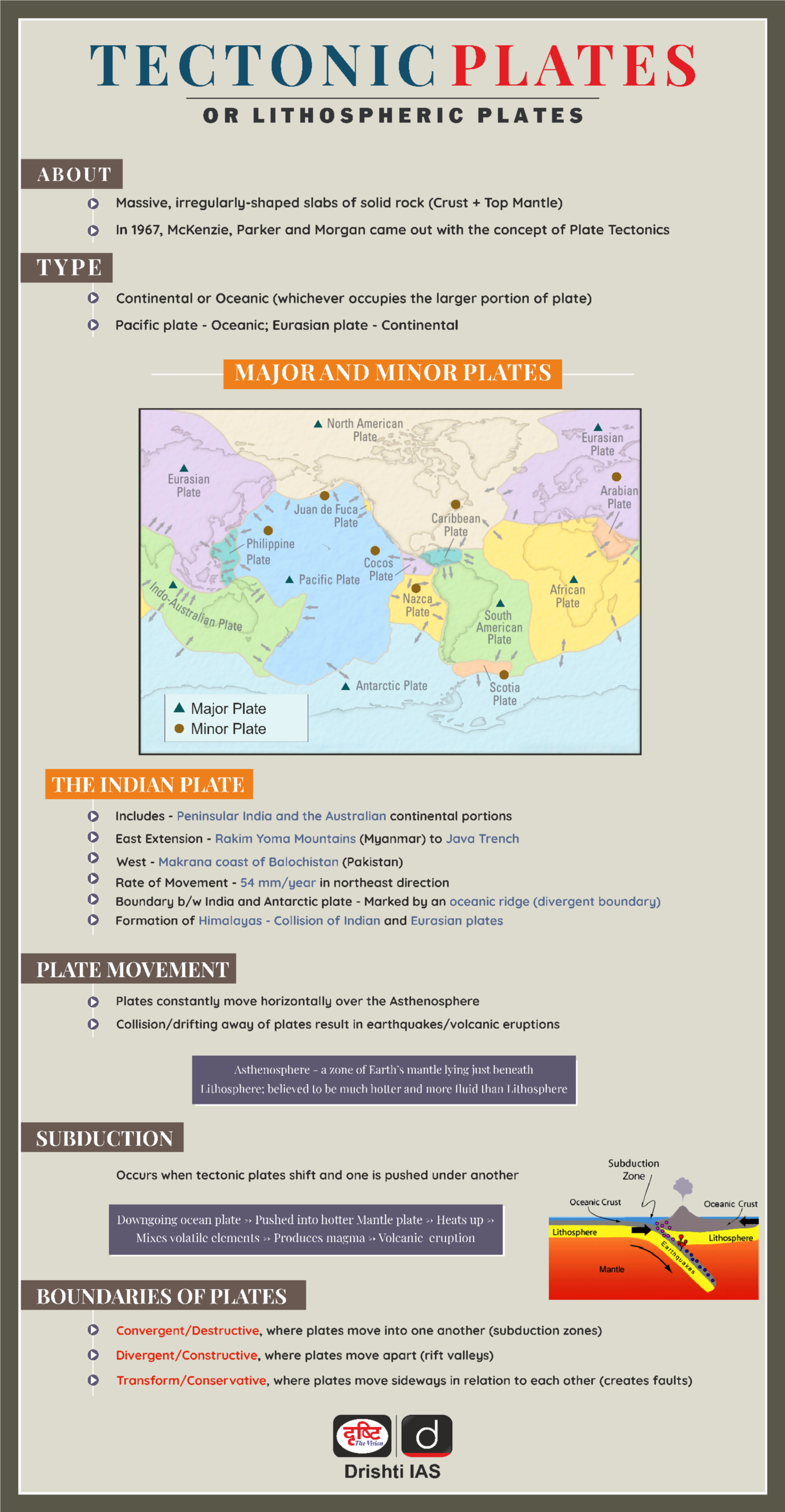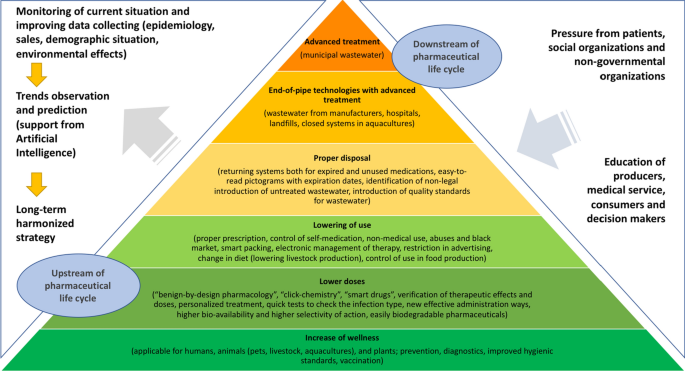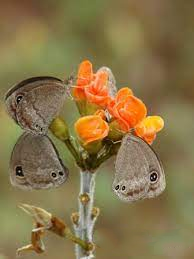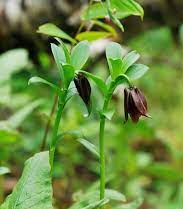Infographics
International Relations
India as Voice of Global South
For Prelims: Global South, Global North, G20, UNSC, BRI, Green Energy Fund.
For Mains: Challenges and Way Forward for India’s G20 Presidency.
Why in News?
As India assumed the G20 Presidency, the External Affairs Minister of India iterated the country’s role as the “voice of the Global South”, that is otherwise under-represented in global forums.
What is Global North and Global South?
- ‘Global North’ refers loosely to countries like the US, Canada, Europe, Russia, Australia and New Zealand, while ‘Global South’ includes countries in Asia, Africa and South America.
- This classification is more accurate as the countries share similarities in terms of wealth, indicators of education and healthcare, etc.
- Some of the South countries like India and China have emerged economically, in the last few decades.
- The progress achieved by many Asian countries is also seen as challenging the idea that the North is the ideal.
What were the Earlier Used Classification Systems?
- First World, Second World and Third World Countries:
- First, Second and Third Worlds countries refer to countries associated with the Cold war-era alliances of the US, the USSR, and non-aligned countries, respectively.
- World Systems Approach:
- It emphasises an interconnected perspective of looking at world politics. There are three major zones of production: core, peripheral and semi-peripheral.
- The core zones reap profits, being the owners of cutting-edge technologies – countries like the US or Japan.
- Peripheral zones, on the other hand, engage in less sophisticated production that is more labour-intensive.
- Semi-peripheral zone is in the middle including countries like India and Brazil.
- It emphasises an interconnected perspective of looking at world politics. There are three major zones of production: core, peripheral and semi-peripheral.
- Eastern and Western Countries:
- Western countries generally signify greater levels of economic development and prosperity among their people, and Eastern countries considered as being in the process of that transition.
What Led to the Emergence of Global North and South?
- Non-Feasibility of Earlier Classification:
- In the post-Cold War world, the First World/Third World classification was no longer feasible, because when the Communist USSR disintegrated in 1991, most countries had no choice but to ally at some level with the capitalist US, the only remaining global superpower.
- The East/West binary was also seen as often perpetuating stereotypical thinking about African and Asian countries.
- Categorising incredibly diverse countries into a monolith was felt to be too simplistic.
- Commonalities in Global South Countries:
- Most of the Global South countries share a history of colonisation. The region has mostly remained under-represented in international forums such as their exclusion from the permanent membership of the UNSC.
- This exclusion is seen as something that contributes towards the slower growth of global south.
- Most of the Global South countries share a history of colonisation. The region has mostly remained under-represented in international forums such as their exclusion from the permanent membership of the UNSC.
What are the Initiatives for South-South Cooperation?
- Global:
- Brazil, Russia, India, China and South Africa (BRICS) Forum
- India, Brazil and South Africa (IBSA) Forum
- International Day for South-South Cooperation:
- Originally observed on December 19, the date for the United Nations Day for South-South Cooperation was moved to September 12 in 2011.
- It commemorates the date when the United Nations General Assembly (UNGA) adopted a plan of action in 1978 to promote and implement technical cooperation among developing countries.
- Indian:
- Proposal on TRIPS Waiver:
- Trade-Related Aspects of Intellectual Property Rights (TRIPS) waiver, first proposed by the India and South Africa in 2020, would involve a temporary global easing of intellectual property rights (IPRs) on COVID-19 vaccines and treatments to enable them to be produced on a far larger scale, to support global health and a way out of the pandemic. agreement on Covid-19 vaccines, drugs, therapeutics, and related technologies.
- Vaccine Maitri Campaign:
- In 2021, India began its historic campaign called the “Vaccine Maitri” initiative which is in accordance with the ‘Neighbourhood First’ Policy.
- Proposal on TRIPS Waiver:
What are the Roadblocks to the Development of Global South?
- Issue of Green Energy Fund:
- Despite Global North countries’ higher contribution towards global emissions, they are neglecting to pay for funding green energy, for which the ultimate sufferers are the least emitters – the lesser developed countries.
- Impact of Russia-Ukraine War:
- The Russia-Ukraine war severely affected the least developed countries (LDCs) aggravating the concerns related to food, energy and finance, thereby, threatening the development prospects of LDCs.
- China’s Interference:
- China is increasingly making inroads in the Global South through the Belt and Road Initiative (BRI) for developing infrastructure.
- However, it is still questionable that whether BRI will be a win-win situation for both parties or it will focus only on China’s Profit.
- China is increasingly making inroads in the Global South through the Belt and Road Initiative (BRI) for developing infrastructure.
- US Hegemony:
- The world is now considered to be multipolar by many but still, it is the US alone who dominates international affairs.
- Inadequate Access to Resources:
- Global North-South divergences have been historically characterised by major gaps in the access to resources required for crucial developmental outcomes.
- Industrialisation, for example, has been skewed in the favour of advanced economies since the early 1960s, and no major evidence of global convergence was found in this regard.
- Global North-South divergences have been historically characterised by major gaps in the access to resources required for crucial developmental outcomes.
- Impact of Covid-19:
- Covid-19 pandemic has exacerbated the already existing divides.
- Not only have the countries faced different challenges in dealing with the initial phases of the pandemic, but the social and macroeconomic implications being faced today have been far worse for the global South.
- The vulnerability of the domestic economies is far more apparent now in countries ranging from Argentina and Egypt to Pakistan and Sri Lanka.
- Covid-19 pandemic has exacerbated the already existing divides.
How can India be the Voice of Global South?
- Championing the Global South today would demand more active Indian engagement with the messy regional politics within the developing world.
- India must also come to terms with the fact that the Global South is not a coherent group and does not have a single shared agenda. There is much differentiation within the South today in terms of wealth and power, needs and capabilities.
- This demands a tailored Indian policy to different regions and groups of the developing world.
- India is eager to become a bridge between the North and the South by focusing on practical outcomes rather than returning to old ideological battles. If India can translate this ambition into effective policy, there will be no contradiction between the simultaneous pursuit of universal and particular goals.
UPSC Civil Services Examination, Previous Year Question (PYQ)
Q. In which one of the following groups are all the four countries members of G20? (2020)
(a) Argentina, Mexico, South Africa and Turkey
(b) Australia, Canada, Malaysia and New Zealand
(c) Brazil, Iran, Saudi Arabia and Vietnam
(d) Indonesia, Japan, Singapore and South Korea
Ans: (a)
Exp:
- The G20 is an informal group of 19 countries and the European Union, with representatives of the International Monetary Fund and the World Bank.
- In order to achieve a robust global economic growth, the member countries which represent and contribute more than 80% of the global GDP came at the premier forum for international economic cooperation, which was agreed by leaders at the Pittsburgh Summit in Pennsylvania (USA) in September 2009.
- The G20 members include Argentina, Australia, Brazil, Canada, China, France, Germany, India, Indonesia, Italy, Japan, Mexico, Republic of Korea, Russia, Saudi Arabia, South Africa, Turkey, the United Kingdom, the United States and the European Union (EU).
- Therefore, option A is the correct answer.
Mains
Q. “The broader aims and objectives of WTO are to manage and promote international trade in the era of globalization. But the Doha round of negotiationsseem doomed due to differences between the developed and the developing countries.” Discuss in the Indian perspective. (2016)


Indian Polity
National and State Parties
For Prelims: Election Commission of India, Declaration of national and state parties, registered- unrecognised parties, Representation of People Act 1951
For Mains: Procedure of recognition of political parties as national or state
Why in News?
Recently, the Aam Aadmi Party became the 9th National Party of India after the result of Gujarat elections where it gained almost 13% of the vote share.
- At the time of the first General Elections (1952), there were 14 national parties in India.
Note
- The Election Commission of India (ECI) registers political parties for the purpose of elections and grants them recognition as national or state parties on the basis of their poll performance.
- The other parties are simply declared as registered-unrecognised parties.
- As per the Representation of People Act 1951, Registered political parties, in course of time, can get recognition as 'State Party’ or National Party’.
What is a National Party?
- About: As the name suggests, it has a nationwide presence as opposed to a regional party that is restricted to only a particular state or region.
- A certain stature is sometimes associated with being a national party, but this does not necessarily translate into having a lot of national political influence.
- Conditions for Declaring a Party ‘National’:
- As per the ECI’s Political Parties and Election Symbols, 2019 handbook, a political party would be considered a national party if:
- It is ‘recognised’ in four or more states; or
- If its candidates have secured at least 6% of total valid votes in at least 4 states (in latest Lok Sabha or Assembly elections) and the party has at least 4 MPs in the last LS polls; or
- If it has won at least 2% of the total seats in the LS from at least 3 states.
- As per the ECI’s Political Parties and Election Symbols, 2019 handbook, a political party would be considered a national party if:
How is a Party Declared a State Party?
- A party is recognised as a state party in a state if any of the following conditions is fulfilled:
- If it secures 6% of the valid votes polled in the state at a general election to the respective state legislative assembly (state LA) and also, it wins 2 seats in the same state LA.
- If it secures 6% of the total valid votes in the state at a general election to the LS; and also, it wins 1 seat in the LS from the same state.
- If it wins 3% of seats in the LA at a general election to the legislative assembly of the state concerned or 3 seats in the assembly (whichever is more).
- If it wins 1 seat in the LS for every 25 seats or any fraction thereof allotted to the state at a general election to the LS from the state concerned.
- If it secures 8% of the total valid votes polled in the state at a General Election to the LS from the state or to the State LA.
What is the Significance of Being Declared a National/State Party?
- A recognised party (national or state) has the right to certain privileges like allocation of the party symbols, provision of time for political broadcasts on the state-owned television and radio stations and access to electoral rolls.
- These parties are allowed to have 40 “star campaigners” during the time of elections (the registered-unrecognised parties are allowed to have 20 “star campaigners”).
- Every national party is allotted a symbol exclusively reserved for its use throughout the country. Even in the states where it is not contesting elections.
- For a state party, the allotted symbol is exclusively reserved for its use in the state/s in which it is so recognised.

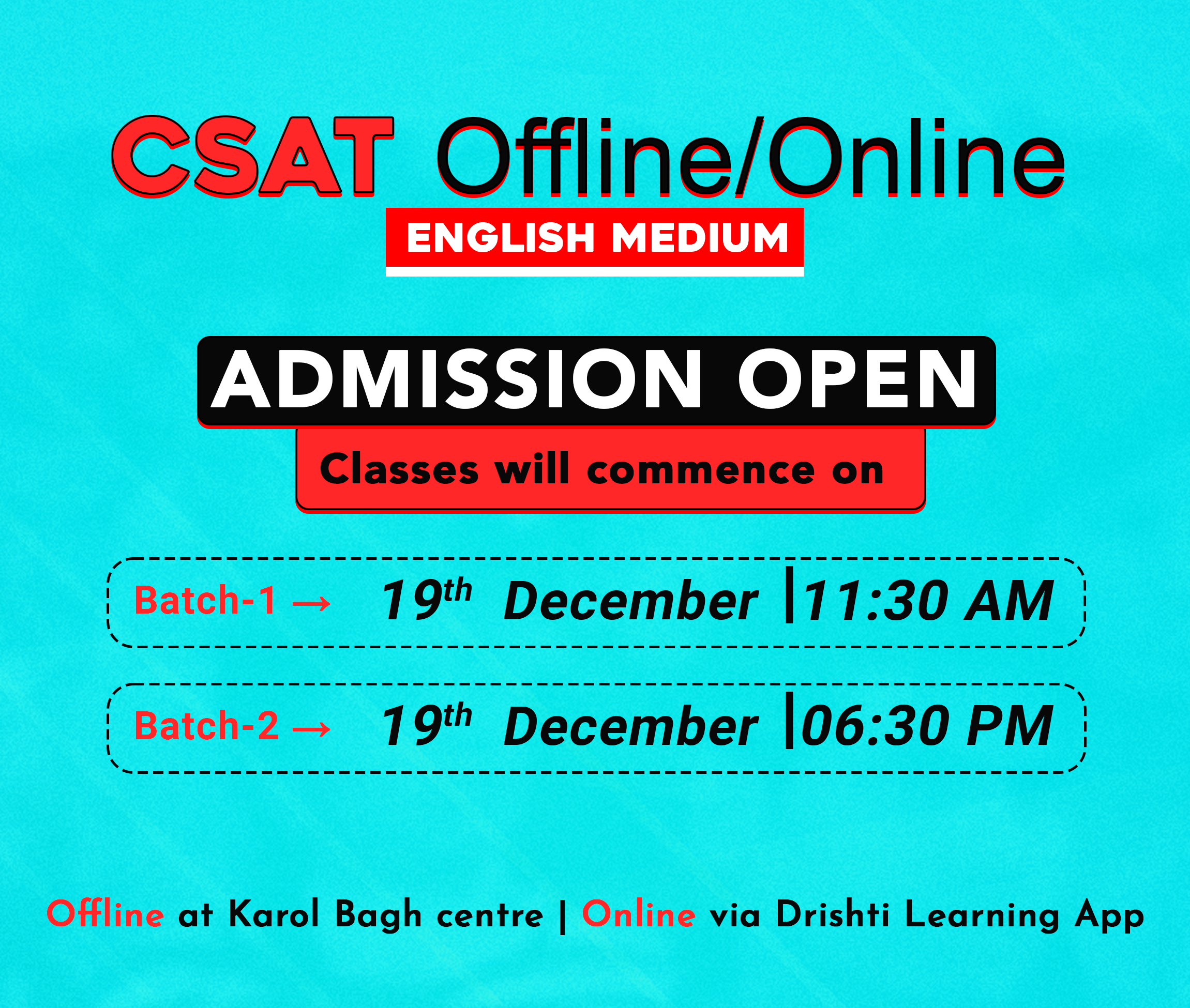
Governance
Bills to Modify the Scheduled Tribes (ST) List
For Prelims: National Commission for Scheduled Tribes, Scheduled Tribes, Fifth Schedule of the Constitution, Sixth Schedule of the Constitution.
For Mains: Process of Inclusion in the Scheduled Tribes List, Constitutional Provisions and Initiatives related to Tribes in India.
Why in News?
Recently, four Bills, seeking to modify the Scheduled Tribes (ST) list in 4 States - Tamil Nadu, Karnataka, Himachal Pradesh and Chhattisgarh, were introduced in Lok Sabha via amendments proposed in the Constitution (STs) Order, 1950.
What are the Proposed Changes?
- The Bill Seeks To:
- Add the Narikoravan and Kuruvikkaran hill tribes to the ST list of Tamil Nadu.
- The Lokur Committee (1965), in its report, also recommended their inclusion in the list.
- Introduce Betta-Kuruba as a synonym for the already categorised Kadu kuruba in the ST list of Karnataka.
- Add a number of synonyms in Devanagri script for the already categorised Bhariya Bhumia tribe in the ST list of Chhattisgarh.
- As per the Ministry of Tribal Affairs, they are all part of the same tribe but had been kept out of the list just because they are pronounced and spelled their names differently.
- Add Hattee community of Trans-Giri region in Sirmaur district to the ST list of Himachal Pradesh (after almost five decades).
- Add the Narikoravan and Kuruvikkaran hill tribes to the ST list of Tamil Nadu.
What is the Process of Inclusion in the ST List?
- Recommendation from State:
- The process to include tribes in the ST list begins with recommendations from the respective State governments, which are then sent to the Tribal Affairs Ministry, which reviews and sends them to the Registrar General of India for approval.
- Approval from NCST: This is followed by the National Commission for Scheduled Tribes (NCST) approval before the list is sent to the Cabinet for a final decision.
- President's Assent: The final decision rests with the President (under Articles 342).
- The inclusion of any community in the STs comes into effect only after the President assents to a Bill amending the Constitution (Scheduled Tribes) Order, 1950.
What are the Provisions Related to STs in India?
- Definition:
- The Constitution of India does not define the criteria for recognition of STs. As per Census-1931, STs are termed as "backward tribes” living in the "Excluded" and "Partially Excluded" areas.
- The Government of India Act of 1935 called for the first time for representatives of "backward tribes" in provincial assemblies.
- Constitutional Provisions:
- Article 366(25): It only provides a process to define STs: “STs means such tribes or tribal communities or parts of or groups within such tribes or tribal communities as are deemed under Article 342 to be Scheduled Tribes for the purposes of this Constitution.”
- Article 342(1): The President with respect to any State/UT (after consultation with the Governor in case of state) may specify the tribes/tribal communities/part of or groups within tribes/ tribal communities as a Scheduled Tribe in that State/UT.
- Fifth Schedule: It lays out provisions for the Administration and Control of Scheduled Areas and STs in states other than 6th Schedule States.
- Sixth Schedule: Deals with the administration of the tribal areas in Assam, Meghalaya, Tripura and Mizoram.
- Statutory Provisions:
- Protection of Civil Rights Act, 1955 against Untouchability.
- Scheduled Castes and the Scheduled Tribes (Prevention of Atrocities) Act, 1989.
- Provisions of the Panchayats (Extension to the Scheduled Areas) Act, 1996.
- Scheduled Tribes and Other Traditional Forest Dwellers (Recognition of Forest Rights) Act, 2006.
UPSC Civil Services Examination Previous Year Question (PYQ)
Prelims
Q1. If a particular area is brought under the Fifth Schedule of the Constitution of India, which one of the following statements best reflects the consequence of it? (2022)
(a) This would prevent the transfer of land of tribal people to non-tribal people.
(b) This would create a local self-governing body in that area.
(c) This would convert that area into a Union Territory.
(d) The State having such areas would be declared a Special Category State.
Ans: (a)
Q2. Under which Schedule of the Constitution of India can the transfer of tribal land to private parties for mining be declared null and void? (2019)
(a) Third Schedule
(b) Fifth Schedule
(c) Ninth Schedule
(d) Twelfth Schedule
Ans: (b)
Mains
Q. What are the two major legal initiatives by the State since Independence addressing discrimination against Scheduled Tribes (STs)? (2017)

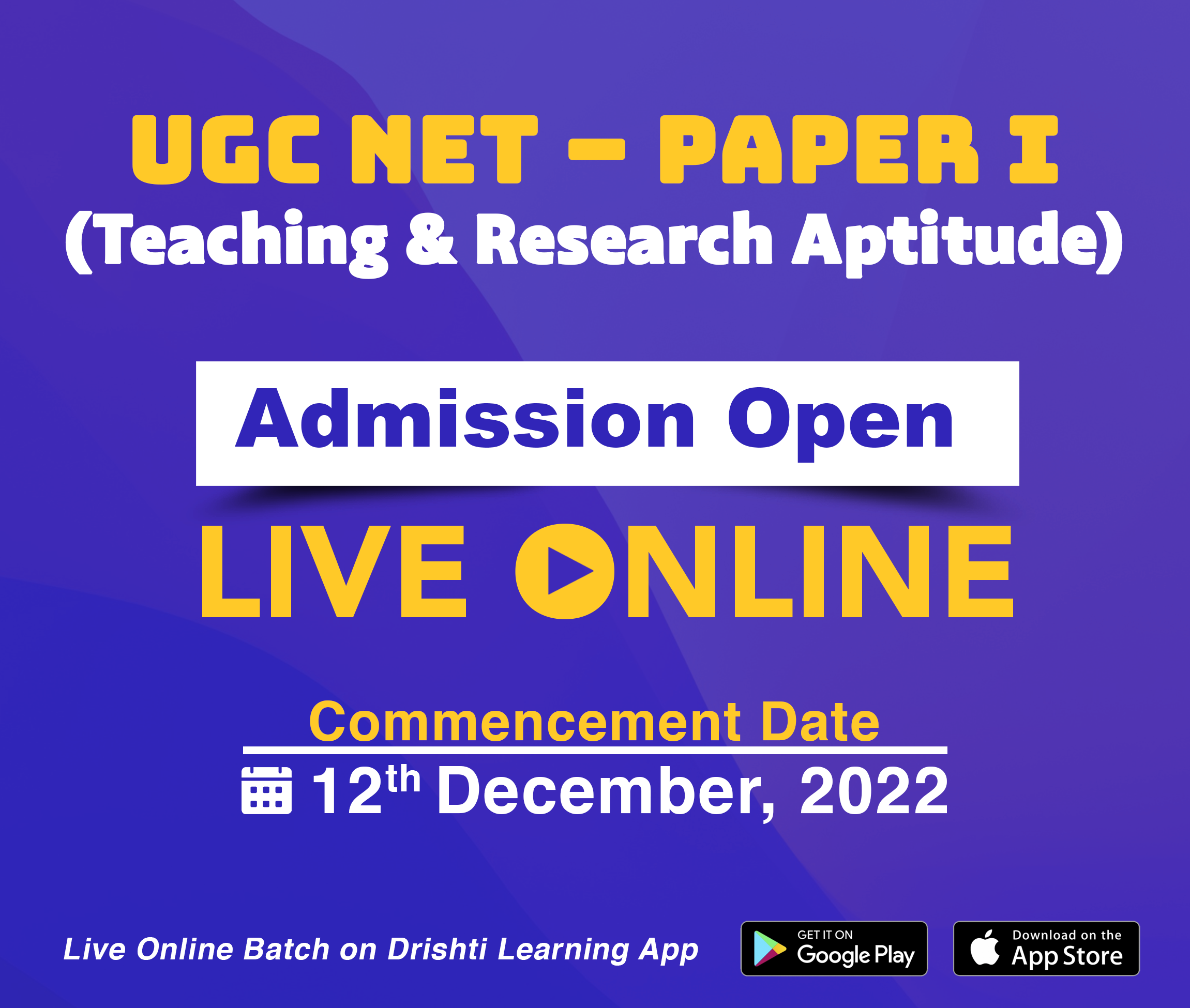
Indian Polity
National Judicial Commission Bill, 2022
For Prelims: Collegium System, 99th Constitution (Amendment) Act, Chief Justice of India (CJI), SP Gupta Vs Union of India 1981, Second Judges Case.
For Mains: Constitutional Provision for Appointment of Judges, Evolution of Collegium System, Issues Related to the Collegium System, Towards Representative Judiciary.
Why in News?
Recently, the National Judicial Commission Bill, 2022 was introduced after the majority of voice votes were in its favour.
What are the Highlights of the Bill?
- Regulates the Procedure of Appointment:
- The bill aims to regulate the procedure to be followed by the National Judicial Commission for recommending people for appointment as the Chief Justice of India and other judges of the Supreme Court and Chief Justices and other judges of High Courts.
- Regulate the Transfers:
- It also aims to regulate their transfers and to lay down judicial standards and provide for accountability of judges, and establish credible and expedient mechanism for investigating into individual complaints for misbehaviour or incapacity of a judge of the apex court or of a high court and to regulate the procedure for such investigation.
- Removal of a Judges:
- It also proposes for the presentation of an address by parliament to the president in relation to proceeding for removal of a judge and for matters connected therewith or incidental thereto.
What was the National Judicial Appointments Commission (NJAC)?
- About:
- In August 2014, Parliament passed the Constitution (99th Amendment) Act, 2014 along with the NJAC Act, 2014, providing for the creation of an independent commission to appoint judges to the Supreme Court and high courts to replace the collegium system.
- In 2015, the Supreme Court declared both the 99th Constitutional Amendment, 2014 and the NJAC Act, 2014 as unconstitutional and null and void.
- Composition of NJAC:
- The Chief Justice of India as the ex officio Chairperson
- Two senior-most Supreme Court Judges as ex officio members
- The Union Minister of Law and Justice as ex officio member
- Two eminent persons from civil society (to be nominated by a committee consisting of the Chief Justice of India, Prime Minister of India and the Leader of Opposition in the Lok Sabha; one of the eminent persons to be nominated from SC/ST/OBC/minorities or women)
- Difference between Collegium System and NJAC (Appointment):
- NJAC:
- The Chief Justice of India and Chief Justices of the high courts were to be recommended by the NJAC based on seniority while SC and HC judges were to be recommended on the basis of ability, merit, and “other criteria specified in the regulations”.
- The Act empowered any two members of the NJAC to veto a recommendation if they did not agree with it.
- Collegium System:
- In the collegium system, a group of the senior-most judges makes appointments to the higher judiciary and this system has been operational for nearly three decades.
- NJAC:
What is the Collegium System?
- The Supreme Court Collegium is a five-member body, which is headed by the incumbent Chief Justice of India (CJI) and comprises the four other senior most judges of the court at that time.
- A High Court collegium is led by the incumbent Chief Justice and two other senior most judges of that court.
- The government can also raise objections and seek clarifications regarding the collegium’s choices, but if the collegium reiterates the same names, the government is bound to appoint them as judges.
What are Constitutional Provisions related to the Appointment of Judges?
- Articles 124(2) and 217 of the Constitution deal with the appointment of judges to the Supreme Court and High Courts.
- The appointments are made by the President, who is required to hold consultations with “such of the judges of the Supreme Court and of the High Courts” as he may think is needed.
- But the Constitution does not lay down any process for making these appointments.
Why was the NJAC Challenged in Court?
- In early 2015, the Supreme Court Advocates-on-Record Association (SCAORA) filed a plea challenging the provisions of what were now laws.
- SCAORA contended that both the Acts were “unconstitutional” and “invalid”.
- It argued that the 99th Amendment which provided for the creation of the NJAC took away the “primacy of the collective opinion of the Chief Justice of India and the two senior-most Judges of the Supreme Court of India” as their collective recommendation could be vetoed or “suspended by majority of three non-Judge members”.
- It stated that the Amendment “severely” damaged the basic structure of the Constitution, of which the independence of the judiciary in appointing judges of the higher judiciary was an integral part.
- It also contended that the NJAC Act was itself “void” and “ultra vires” the Constitution as it was passed in both Houses of the parliament when Articles 124(2) and 217(1) as originally enacted were in force, and the 99th Amendment had not received Presidential assent.
Way Forward
- Balance Between Independence and Accountability: The real issue is not who (judiciary or executive) appoints the judges, but the manner in which they are appointed.
- For that, whatever may be the composition of the Judicial Appointment Commission (JAC), it is important to strike a balance between judicial independence and judicial accountability.
- The Executive should have a say in appointments but the composition of the JAC should be such that it does not result in compromising judicial independence.
- For that, whatever may be the composition of the Judicial Appointment Commission (JAC), it is important to strike a balance between judicial independence and judicial accountability.
- Justice Inside Judiciary: Care must be taken to ensure that the institutional imperative of the Court for dispensing justice is maintained inside the judiciary with equality of opportunity and fixed criteria for selection of judges.
- Reconsidering the Establishment of NJAC: NJAC's Act may be amended to include safeguards that would make it constitutionally valid, as well as reorganised to ensure that majority control remains with the judiciary.
UPSC Civil Services Examination Previous Year Question (PYQ)
Prelims
Q. Consider the following statements: (2019)
- The 44th Amendment to the Constitution of India introduced an Article placing the election of the Prime Minister beyond judicial review.
- The Supreme Court of India struck down the 99th Amendment to the Constitution of India as being violative of the independence of judiciary.
Which of the statements given above is/are correct?
(a) 1 only
(b) 2 only
(c) Both 1 and 2
(d) Neither 1 nor 2
Ans: (b)
Mains
Q. Critically examine the Supreme Court’s judgement on ‘National Judicial Appointments Commission Act, 2014’ with reference to appointment of judges of higher judiciary in India. (2017)


Biodiversity & Environment
Pharmaceutical Pollution
For Prelims: Pharmaceutical Pollution, Wastewater, Bioaccumulation, Multi-Drug Resistance, National Action Plan for Antimicrobial Resistance 2017.
For Mains: Pharmaceutical Pollution, Associated Concerns, Potential Solutions and Related Initiatives.
Why in News?
According to a research paper, Pharmaceutical Pollution is an overlooked but urgent issue that needs coordinated action from across the pharmaceutical, healthcare and environmental sectors.
- Almost half, or 43% of the world’s rivers are contaminated with active pharmaceutical ingredients in concentrations that can have disastrous ramifications on health.
What is Pharmaceutical Pollution?
- About:
- Pharmaceutical plants are often incapable of filtering out all the chemical compounds used in their manufacturing process and as such, the chemicals will seep into the surrounding freshwater systems and eventually into the oceans, lakes, streams, and rivers.
- Wastewater from pharmaceutical manufacturers is also sometimes discharged into open fields and nearby water bodies, thereby increasing the pharmaceutical waste or their by-product load in the environment, landfills, or dumping areas. All this is basically known as pharmaceutical pollution.
- Effects:
- Effects on Fish and Aquatic Life:
- A number of studies have indicated that estrogen found in birth control pills and postmenopausal hormone treatments, have a feminizing effect on male fish and can alter female-to-male ratios.
- Disruption of Sewage Treatment Process:
- Antibiotics present in the sewage treatment systems can, therefore, inhibit the activities of the sewage bacteria, and therefore seriously affect the organic matter decomposition.
- Effect on Drinking Water:
- The chemicals present in these pharmaceuticals, find a way into waterways, after being excreted from the body or after being flushed down the toilet.
- Most municipal sewage treatment facilities can’t remove these pharmaceutical compounds from drinking water and people end up consuming the same compounds.
- Chronic exposure to these compounds could result in serious health issues.
- Long-term Effects on the Environment:
- Some pharmaceutical compounds can persist for long in the environment and in water supplies.
- These bioaccumulate, enter a cell and move up food chains, becoming more concentrated in the process. This can have disastrous effects on life and environment, in the long run.
- Some pharmaceutical compounds can persist for long in the environment and in water supplies.
- Effects on Fish and Aquatic Life:
- Solutions:
- Investment in public education on the proper disposal of drugs should be done as part of the drug take-back programs
- Tougher Regulations to limit large-scale medicine flushing in hospitals, nursing homes and other healthcare institutions.
- Additional research is desperately required to assess the potential human effects of pharmaceutical pollution.
- Limiting bulk purchases will ensure only the required amount is supplied and therefore,b
- Proper trashing must be preferred over flushing as it leads to them being incinerated or buried in landfills.
What is the Status of Pharmaceutical Pollution in India?
- World’s Third-Largest Producer:
- India is the world’s third-largest producer of pharmaceuticals, in which about 3000 drug companies and about 10500 manufacturing units are involved.
- Pharmaceuticals production has been considered one of the most polluting industries in various parts of India.
- India is the world’s third-largest producer of pharmaceuticals, in which about 3000 drug companies and about 10500 manufacturing units are involved.
- Bulk Drug Capital of India:
- In India, the dominant pharma industries are located in the city of Hyderabad (known as the ‘Bulk Drug Capital of India”).
- It accounts for more than about 800 pharma/biotech units.
- According to the survey, local people argue that the groundwater is highly contaminated in the regions where industries are situated.
- Multi-Drug Resistance Infections:
- It has been estimated that about 60000 newborns die annually in India because of multidrug-resistance infections, where pharmaceutical water pollution with antimicrobial drugs is responsible for that.
What are the Related Government Initiatives?
- National Action Plan for Antimicrobial Resistance 2017: It was proposed to tackle the problem related to limits on antibiotics in industrial waste.
- Zero Liquid Discharge Policy: Central Pollution Control Board (CPCB) has introduced guidelines to various pharma industries to achieve zero liquid discharge.
- Around 86 of the 220 bulk drug makers in Hyderabad have zero liquid discharge facilities, which showed that they could recycle almost all the liquid effluent.
- Continuous Monitoring of Effluents: The Ministry of Environment, Forest, and Climate Change (MoEFCC) has also announced that industries must install devices to monitor the effluent continuously.
UPSC Civil Services Examination, Previous Year Questions (PYQs)
Prelims
Q. Which of the following are the reasons for the occurrence of multi-drug resistance in microbial pathogens in India? (2019)
- Genetic predisposition of some people
- Taking incorrect doses of antibiotics to cure diseases
- Using antibiotics in livestock farming
- Multiple chronic diseases in some people
Select the correct answer using the code given below.
(a) 1 and 2
(b) 2 and 3 only
(c) 1, 3 and 4
(d) 2, 3 and 4
Ans: (b)
Exp:
- Antimicrobial Resistance (AMR) is the ability of a microorganism (like bacteria, viruses, and some parasites) to stop an antimicrobial (such as antibiotic, antiviral and antimalarial) from working against it. As a result, standard treatments become ineffective, infections persist and may spread to others.
- A genetic predisposition (sometimes also called genetic susceptibility) is an increased likelihood of developing a particular disease based on a person’s genetic makeup. A genetic predisposition results from specific genetic variations that are often inherited from a parent. It has no direct relation with Antimicrobial Resistance. Hence, 1 is not correct.
- AMR occurs naturally over time. In many places, antibiotics are overused and misused in people and animals, and are often given without professional oversight. Examples of misuse include when they are taken by people with viral infections like cold and flu, and when they are given as growth promoters in animals or used to prevent diseases in healthy animals. Hence, 2 and 3 are correct.
- Multiple chronic diseases are two or more chronic diseases that affect a person at the same time. For example, either a person with arthritis and hypertension or a person with heart disease and depression, both have multiple chronic diseases. So it is not necessary that a person with Multiple chronic disease will have an antimicrobial resistance, because a chronic disease can be of type where administering antibiotics is not required. Hence, 4 is not correct.
- Therefore, option (b) is the correct answer.
Mains
Q. Can overuse and free availability of antibiotics without Doctor’s prescription, be contributors to the emergence of drug-resistant diseasesin India? What are the available mechanismsfor monitoring and control? Critically discuss the various issues involved. (2014)

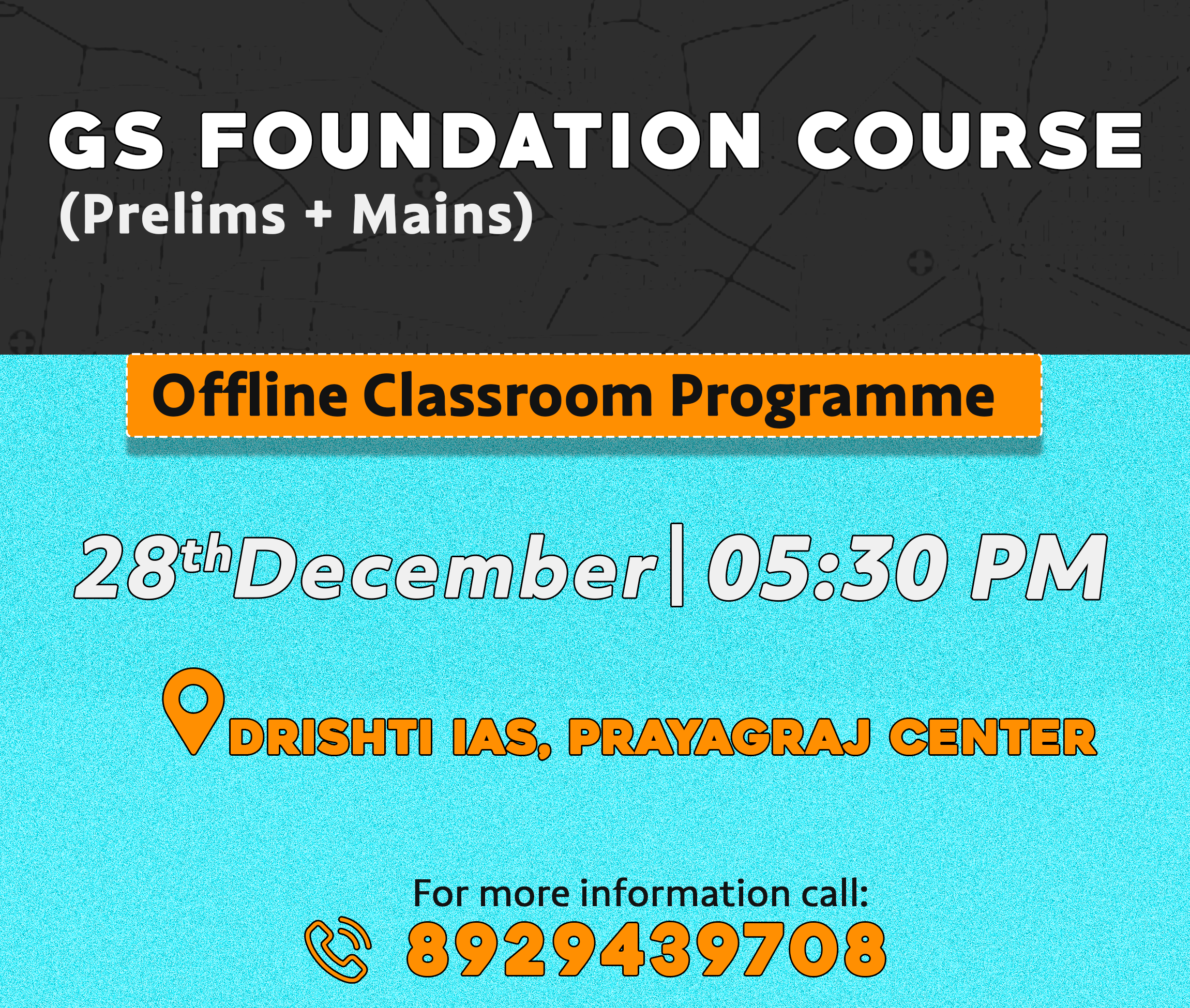
Important Facts For Prelims
Three Himalayan Medicinal Plants Enter IUCN Red List
Why in News?
Three medicinal plant species (Meizotropis pellita, Fritillaria cirrhosa, Dactylorhiza hatagirea) found in the Himalayas have been added to the IUCN Red List of Threatened Species following a recent assessment.
- This assessment in the Himalayan region shows deforestation, habitat loss, forest fires, illegal trade and climate change pose a serious threat to the species. The fresh data is expected to aid conservation efforts in the region.
What are the Key Highlights of these Species?
- Meizotropis pellita:
- About:
- It is commonly known as Patwa, is a perennial shrub with a restricted distribution that is endemic to Uttarakhand.
- Enlisting in IUCN:
- The study stated that the species is listed as ‘critically endangered’ based on its limited area of occupancy (less than 10 sq. km).
- The species is threatened by deforestation, habitat fragmentation and forest fires.
- Significance:
- The essential oil extracted from the leaves of the species possesses strong antioxidants and can be a promising natural substitute for synthetic antioxidants in pharmaceutical industries.
- Fritillaria cirrhosa:
- About:
- It is commonly known as Himalayan fritillary, is a perennial bulbous herb.
- Enlisting in IUCN:
- Considering the rate of decline, long generation length, poor germination potential, high trade value, extensive harvesting pressure and illegal trade, the species is listed as ‘vulnerable’.
- Significance:
- In China, the species is used for the treatment of bronchial disorders and pneumonia. The plant is also a strong cough suppressant and a source of expectorant drugs in traditional Chinese medicine.
- Dactylorhiza hatagirea:
- About:
- It is commonly known as Salampanja, is a perennial tuberous species endemic to the Hindu Kush and Himalayan ranges of Afghanistan, Bhutan, China, India, Nepal, and Pakistan.
- Enlisting in IUCN:
- It is threatened by habitat loss, livestock grazing, deforestation, and climate change, the species is listed as ‘endangered’.
- Significance:
- It is extensively used in Ayurveda, Siddha, Unani and other alternative systems of medicine to cure dysentery, gastritis, chronic fever, cough and stomach aches.
UPSC Civil Services Examination Previous Year Question (PYQ)
Q. With reference to the International Union for Conservation of Nature and Natural Resources (IUCN) and the Convention on International Trade in Endangered Species of Wild Fauna and Flora (CITES), which of the following statements is/are correct? (2015)
- IUCN is an organ of the United Nations and CITES is an international agreement between governments.
- IUCN runs thousands of field projects around the world to better manage natural environments.
- CITES is legally binding on the States that have joined it, but this Convention does not take the place of national laws.
Select the correct answer using the code given below:
(a) 1 only
(b) 2 and 3 only
(c) 1 and 3 only
(d) 1, 2 and 3
Ans: (b)


Important Facts For Prelims
Air Breathing Engines
Why in News?
Recently, the Indian Space Research Organisation (ISRO) has successfully conducted the hot test of Scramjet Engine, a type of Air Breathing Engine.
- India is the fourth country to demonstrate the flight testing of a Scramjet Engine.
What are Air Breathing Engines?
- About:
- An air-breathing engine is an engine that takes in air from its surroundings in order to burn fuel.
- All practical air breathing engines are internal combustion engines that directly heat the air by burning fuel, with the resultant hot gases used for propulsion via a propulsive nozzle.
- A continuous stream of air flows through the air-breathing engine. The air is compressed, mixed with fuel, ignited and expelled as the exhaust gas.
- Thrust produced by a typical air-breathing engine is about eight times greater than its weight.
- The thrust results from the expulsion of the working gases from the exhaust nozzle.
- Types:
- Ramjet: A ramjet is a form of air-breathing jet engine that uses the vehicle’s forward motion to compress incoming air for combustion without a rotating compressor.
- Ramjets work most efficiently at supersonic speeds but they are not efficient at hypersonic speeds.
- Scramjet: A scramjet engine is an improvement over the ramjet engine as it efficiently operates at hypersonic speeds and allows supersonic combustion.
- Dual Mode Ramjet (DMRJ): A dual mode ramjet (DMRJ) is a type of jet engine where a ramjet transforms into a scramjet over Mach 4-8 range, which means it can efficiently operate both in subsonic and supersonic combustion modes.
- Ramjet: A ramjet is a form of air-breathing jet engine that uses the vehicle’s forward motion to compress incoming air for combustion without a rotating compressor.
| Speed Range | Mach Number | Velocity in m/s |
| Subsonic | < 0.8 | < 274 |
| Transonic | 0.8–1.2 | 274–412 |
| Supersonic | 1.2–5 | 412–1715 |
| Hypersonic | 5–10 | 1715–3430 |
| High-hypersonic | 10–25 | 3430–8507 |
- Significance:
- Air Breathing Engine provides a technological key for low-cost space transportation system.
- The technology is an important step towards developing reusable launch vehicles.
- Basically, of the total launch vehicle mass, 86% is propellant mass in the launch vehicle. Out of that propellant, 70% is oxidiser.
- These engines can reduce nearly 70% of the propellent carried in the vehicles as these systems use atmospheric oxygen, which is available up to a height of 50km from the earth’s surface.

